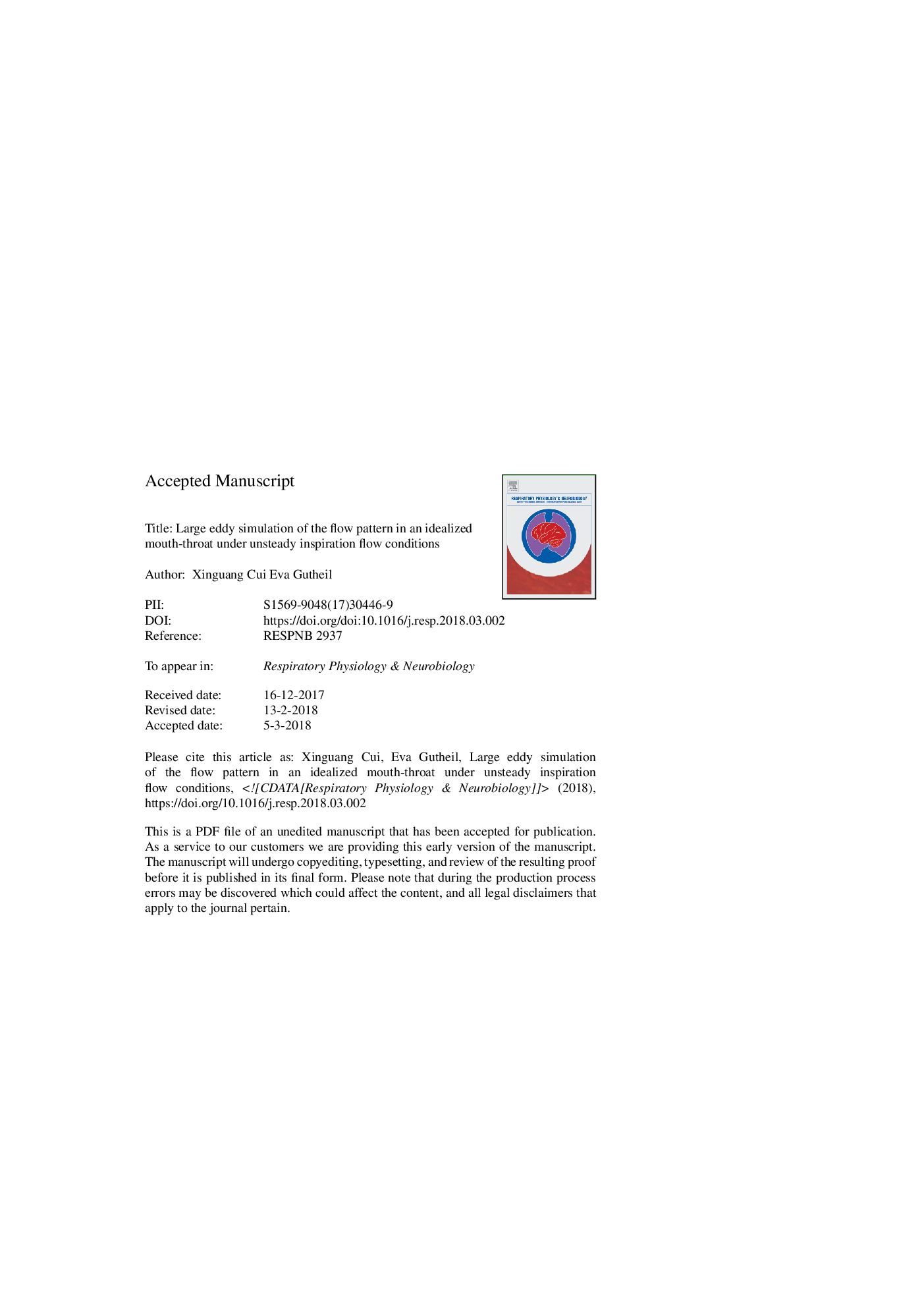| Article ID | Journal | Published Year | Pages | File Type |
|---|---|---|---|---|
| 8650794 | Respiratory Physiology & Neurobiology | 2018 | 27 Pages |
Abstract
An excellent understanding of the airflow properties is critical to improve the drug delivery efficiency via the extrathoracic airway. The present numerical study focuses on the investigation the characteristics of important airflow structures such as the secondary vortices, the impinging jet and the recirculation zone under unsteady inspiration flow conditions in a circular idealized mouth-throat model using large eddy simulation (LES). Five inhalation cycles are simulated, the last one of which is analyzed in detail at five different times. Two times are chosen during the accelerating branch, one at the peak and two within the decelerating inhalation wave. The flow exhibits an extinct process of the flow transiting from laminar to turbulent during the accelerating phase and transiting back from turbulent to laminar in the decelerating phase. It is found that the flow is much more turbulent during the decelerating phase compared to the accelerating phase of the inspiration wave, which is associated with more smaller secondary vortices, a shorter and more unsteady laryngeal jet, a smaller and more unsteady recirculation zone, as well as an enlarged mixing zone. These differences during the unsteady inspiration require more attention in particular if particle transport and deposition in the upper airway are to be investigated.
Keywords
Related Topics
Life Sciences
Biochemistry, Genetics and Molecular Biology
Physiology
Authors
Xinguang Cui, Eva Gutheil,
